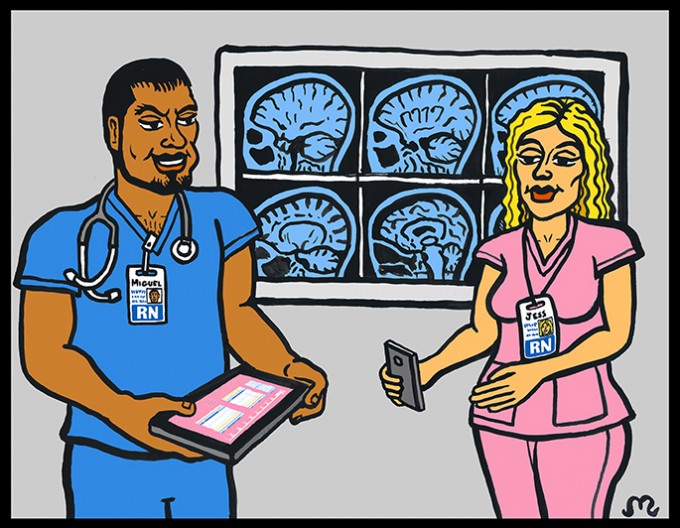Feature
Battling Bullies: How to Take on Nursing Cliques and Gangs (and Win)
How to survive and fix a toxic workplace

On the first day of her clinical hours for her undergraduate degree in nursing, Emily noticed that some of the unit’s other female employees wore hair bands. Although it wasn’t part of the dress code on that notoriously tough and cliquish unit, she decided that she would tie up her long hair in a similar style.
In the locker room the next morning, Emily was confronted by one of the hair-band-wearing nurses, who demanded, “Who gave you that?” “Nobody,” Emily replied. “I noticed other girls wearing one, so I wore one too.” “You don’t wear a hair band unless we give you permission to wear one!” the other nurse retorted.
She then snatched it off of Emily’s head, leaving the nursing student mortified and speechless.
There is nothing new about bullying and incivility in the nursing profession. “Nurses eat their young” is an adage that has survived many generations. It’s a common and costly problem: Some studies estimate that bullying and incivility are responsible for 60 percent of the new graduate nurses who resign within the first six months of employment, and for more than 20 percent of nursing turnover overall.
A study of horizontal violence and new nurses, published in the journal Creative Nursing in 2011, found that up to 34 percent of nurses consider leaving the profession because of bullying. Even for those who stick it out, a toxic workplace may haunt a nurse throughout his or her entire career. One in five nurses who have been bullied suffer from post-traumatic stress disorder (PTSD).
Social Bonding Gone Bad
We are born as individuals, but we survive and thrive in groups. You can blame oxytocin: When we bond with another human, our brains release small amounts of oxytocin, often referred to as the cuddle hormone, which compels us to seek out other people for love, companionship and protection.
People with strong personal bonds tend to be healthier, live longer and feel more joy. Many nurses spend more time with the people they work with than with their own families and friends. Therefore, to enjoy a long, healthy and satisfying career in nursing, it’s important to seek out positive work relationships.
Unfortunately, nurses are notorious for cliquishness, and when a group becomes a clique or a gang, it can promote disruptive behaviors in the workplace. To avoid this, it’s important to understand the difference between a group of friends (healthy, positive) and a clique or gang (unhealthy, destructive).
Cliques: Who’s In, Who’s Out
So, what is a clique? Cliques are groups of individuals who share similar interests, spend time together — and make it clear to others that not just anyone can join the group. Membership in a clique usually provides some special privileges denied to outsiders, even if it’s as simple as being allowed to sit at a particular table during meal breaks.
Cliques are commonplace during adolescence — think of the high school cliches about jocks, greasers, preppies and so on — but they can continue into adulthood. In a 2013 survey conducted by CareerBuilder, 43 percent of employees reported that their workplaces are populated by cliques.
Exclusion is a central part of any clique; they use it as a weapon. Clique members stick together and tend to shun people who aren’t in the group, which can make going to work a stressful and unpleasant experience. Did you know that when people feel excluded, the pain centers of their brains light up? It’s painful to feel left out of a social group. Cliques know this and use it against others. The result is unnecessary drama and distraction.













